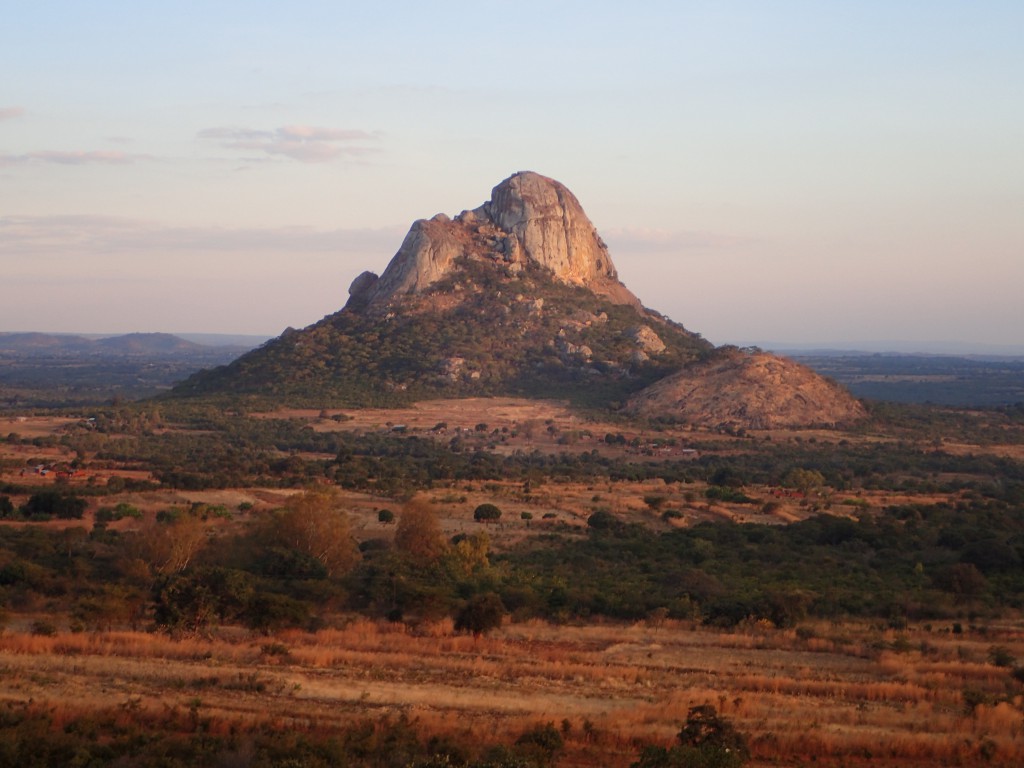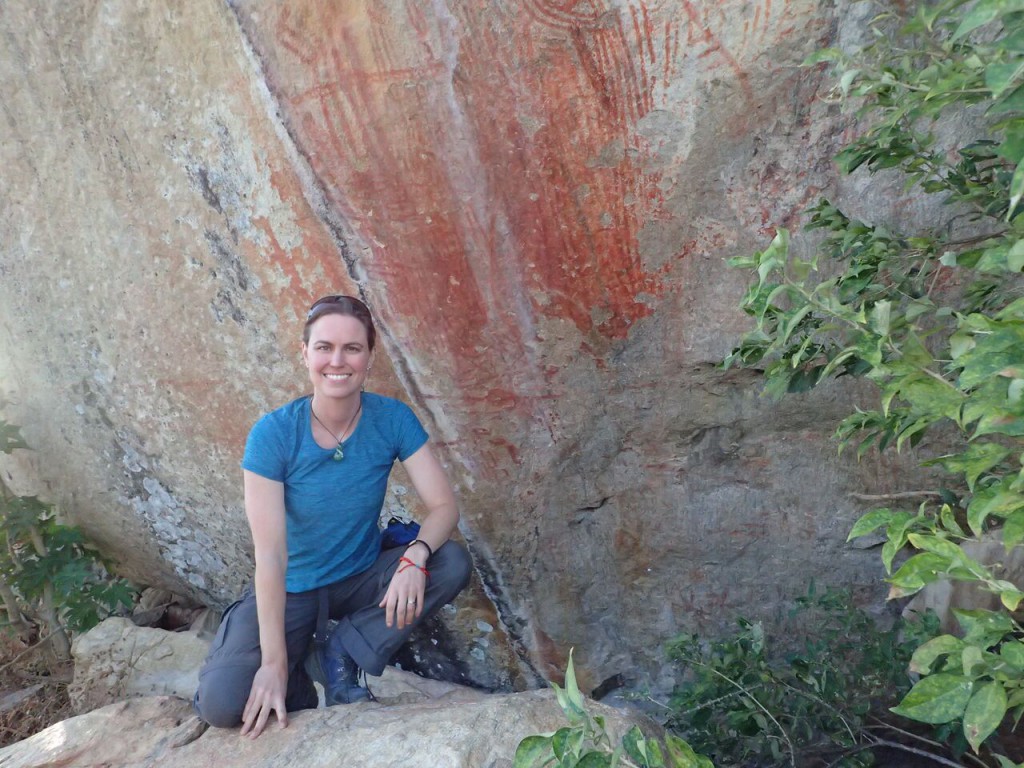Oldest African DNA Offers Rare Window Into Past
Posted on Categories Discover Magazine

Mount Hora in Malawi, where researcher Jessica Thompson obtained the oldest African DNA ever successfully sequenced. (Credit Jessica Thompson/Emory University)
A great irony about Africa is that, even though it’s the birthplace of our species, we know almost nothing about the prehistoric populations who lived there: the bands of hunter gatherers who moved across the massive continent, interacting with and sometimes replacing other groups.
Today that changes.
Thanks to new research that includes the oldest African DNA ever successfully read, we’re seeing Africa’s prehistory like never before. Archaeologists and paleogeneticists are finally starting to fill in some crucial gaps about the human story.
Imagine you’re an archaeologist, specifically a paleolithic archaeologist who studies the earliest chapters of our story, before cities or iron or agriculture, and you’re focused on Africa, which is, after all, where all of us can trace back our ancestry. (Yes, all of us.)
Imagine what it’s like to sit through one conference after another as colleagues who work in Eurasia share one thrilling discovery after the next, all unearthed thanks to paleogenomic research, or the study of ancient DNA (aDNA). An entirely new ancient hominin, the Denisovans of Siberia, known only from fossil fragments that yielded aDNA! Awesome! Successful sequencing of a 430,000-year-old genome from Spain! Super cool!
Emory University’s Jessica Thompson doesn’t have to imagine. She is that paleolithic archaeologist, and she felt a mixture of awe and envy as colleagues working at Eurasian sites were able to extract and study aDNA, which needs cold, dry conditions to survive for any length of time.
The dearth of aDNA from Africa made it hard to understand the continent’s rich past, and it also fueled a centuries-old myth that Africa was less significant.
“The success of paleogenomic research in Eurasia feeds that narrative that Eurasia is somehow more important than Africa [and] that’s frustrating to me. We’re hungry to have more information,” says Thompson, echoing the feelings of other archaeologists working in Africa. “I know it’s because we don’t have these nice, cold environments.”
A lightbulb went off at one of those conferences for Thompson, however. She remembered a cave she’d visited as a tourist: it was in Malawi, on a high-plateau mountain called Hora where human skeletons had been excavated in the mid-20th century. And it was cold.
The Ultimate Cold Case
Thompson and colleagues were unable to get access to skeletons found previously at the Mt. Hora site, but they returned to Malawi and found new samples. The Mt. Hora material, combined in the new research with other aDNA from Kenya, Tanzania and South Africa, represented 15 individuals in total, ranging in age from 400 to 8,100 years old. A previously studied aDNA sample from Ethiopia, dated to 4,500 years ago, was also included along with modern African DNA samples for comparison.
The oldest sample, collected by Thompson at Mt. Hora, is the oldest African DNA ever successfully extracted and sequenced, a scientific advance in and of itself. But there’s even bigger significance to the new study, for which she served as second author.
For one thing, the paper represents close collaboration between some of the world’s leading paleogeneticists and archaeologists. Despite both fields delving into the past, researchers often work in parallel tracks that don’t overlap much, looking at different data as they attempt to answer the same questions: how our species evolved and spread across the planet.
“Ancient DNA has revolutionized the field and offers detail in areas we could never hope to achieve,” says Thompson. “Genetic data gives insight into where people were and what contact, what intimate contact, they had with other groups.”
And the first of those insights arrives with the new research.
The Way, Way Back Gene Machine
There is more genetic diversity among humans in Africa than in any other population, but until now, attempts to understand the different threads woven into that fabric have been limited almost entirely to studying modern African DNA.
“We have almost no human fossils from about 30,000 to 300,000 years ago,” says Thompson, acknowledging that despite advances in aDNA extraction, the chances of finding the same amount of it in Africa compared with cooler climes are slim. “We’re not going to have a 300,000 year old Homo heidelbergensis with preserved DNA like they had in Spain. I get that. But if we only look at modern genomics, what are we missing?”
Some researchers look to modern hunter-gatherers, such as the Hadza of Tanzania, and view them almost as frozen in time, representative of ancient populations. But Thompson points out that, despite their traditional lifestyles, the Hadza and other groups have had considerable interaction with populations around them over time.
Says Thompson: “To treat them as relics is tempting but not helpful. We’re able to step back to before them and see how people were actually interacting.”
By sequencing aDNA from the 15 prehistoric individuals and integrating the results with other African DNA and aDNA studies, the team was able to determine that people ancestral to the indigenous people of southern Africa were once distributed much more broadly, but that several of these populations were replaced over time by farmers moving in from western Africa.
The study also uncovered that herders who lived more than 3,000 years ago in what’s now Tanzania were partly ancestral to later individuals spread from Africa’s northeast to its southern edge.
A surprise find included relationships between some of the ancient African DNA with that of ancient DNA from early farmers of the Levant, or eastern Mediterranean, who lived roughly 10,000 years ago — but don’t assume that means there was a long-distance love connection. While it’s possible individuals from the two populations met, it’s also possible that the shared genetic material was inherited from an even older population ancestral to both.
The genetic makeup of the seven Malawi aDNA samples was particularly interesting: They indicate a long-standing population, distinctive to all others, that lasted for about 5,000 years but no longer exists.
What happened to the ancient Malawi people remains a mystery for now, but it’s a question that archaeologists and paleogeneticists may one day answer through further collaboration.

Paleolithic archaeologist Jessica Thompson at a rock art a site called Mwanambavi in Malawi. Similar, undated markings like this are common in this part of the African nation, and were likely created by hunter-gatherers. (Credit Suzanne Kunitz/Emory University)
The open-access paper appears today in Cell; you can also hear more from Thompson about the research, and get a taste of Malawi, in a terrific video.